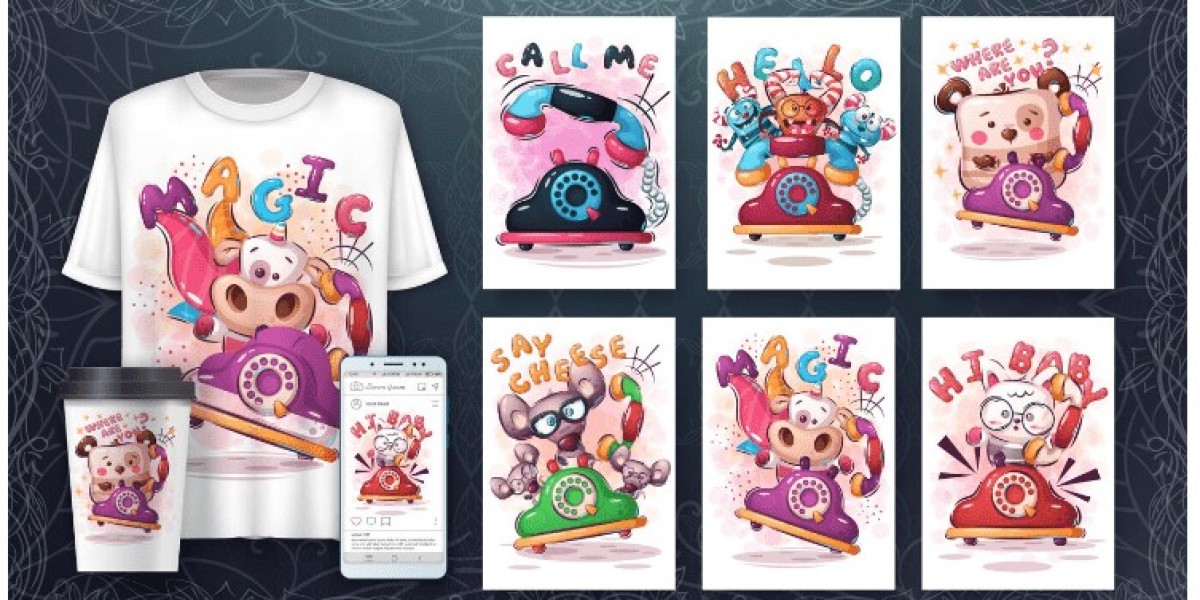Introduction to Direct to Film Printing
Direct to film (DTF) printing is a revolutionary technology in the custom apparel industry that offers unmatched versatility and quality. Unlike traditional methods, such as screen printing or direct-to-garment (DTG) printing, DTF uses a special film as an intermediary to transfer designs onto various materials. This approach opens up new possibilities for vibrant, durable prints on a wide range of fabrics and surfaces.
The Direct to Film Printing Process
The direct to film printing process involves several key steps that make it unique:
- Design Creation: The journey starts with creating or selecting a digital design, often using graphic design software. This design is prepared for printing with high resolution to ensure clarity and detail.
- Printing on Film: The design is then printed onto a specialized PET film using a direct to film printer. This printer applies CMYK inks and white ink to create a vivid and detailed image on the film.
- Adhesive Application: After printing, the film is coated with a fine layer of adhesive powder. This powder is crucial as it allows the design to bond with the fabric or material during the transfer process.
- Curing: The adhesive-coated film is cured using heat to solidify the adhesive, making the design ready for transfer.
- Heat Transfer: The final step involves placing the film onto the desired fabric or material and applying heat and pressure using a heat press. The combination of heat and adhesive ensures the design adheres firmly to the surface, resulting in a durable and high-quality print.
Advantages of Direct to Film Printing
Direct to film printing offers several distinct advantages that make it a popular choice for custom apparel and merchandise:
- Material Versatility: One of the biggest benefits of DTF printing is its ability to work on a wide range of materials. Whether you're printing on cotton, polyester, blends, leather, or even hard surfaces like wood, direct to film printing delivers consistent, high-quality results.
- Durability: DTF prints are known for their longevity. The adhesive and curing process ensures that the prints are resistant to cracking, peeling, and fading, even after repeated washing and heavy use.
- Vibrant Colors: The direct to film printer can produce bright, vivid colors with excellent detail. This makes it ideal for complex designs and multi-color artwork, ensuring that every print is eye-catching and professional.
- Cost-Effective for Small and Large Runs: Unlike traditional screen printing, which requires a significant setup cost and is only economical for large orders, DTF printing is cost-effective for both small and large quantities. This flexibility makes it perfect for custom orders, limited editions, and personalized products.
Choosing the Right Direct to Film Printer
Selecting the right direct to film printer is crucial for achieving the best results. Here are some factors to consider:
- Print Quality: Look for a printer that offers high-resolution output with sharp details and vibrant colors. This is especially important for intricate designs and professional-grade products.
- Speed and Efficiency: Depending on your production needs, consider a printer that can handle your required volume efficiently. However, ensure that speed does not compromise the quality of the prints.
- Material Compatibility: A good direct to film printer should be compatible with various films and materials. This versatility allows you to take on a wide range of projects, from custom apparel to promotional items.
- Ease of Use and Maintenance: Opt for a printer that is easy to set up, operate, and maintain. User-friendly interfaces and straightforward maintenance routines can save time and reduce the risk of errors, especially for beginners.
Conclusion
Direct to film printing is rapidly becoming a cornerstone in the custom apparel and merchandise industry due to its versatility, durability, and cost-effectiveness. Whether you're a business owner, a designer, or someone looking to create personalized products, investing in a direct to film printer can significantly enhance your ability to produce high-quality, custom designs. As this technology continues to evolve, it promises to unlock even more creative possibilities, making it an essential tool for anyone involved in custom printing.



